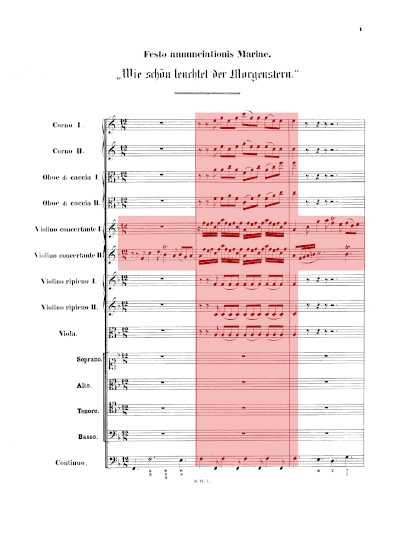Bach’s Cantata No. 1. T. Herbert Dimmock provides an introduction to the cantata. Also, he discusses Bach’s musical portraits and craft in the first movement. BDP #283. http://bachinbaltimore.org/
Bach wrote this piece for the Feast of the Annunciation in the year 1725. There is an interesting fact about that too. The Feast of the Annunciation was a particularly important feast in the Lutheran churches. Of course, it is nine months before the birth of Jesus. It falls on March 25th. Usually March 25th came during the season of Lent. The church had a policy that during Lent that no music was allowed. It was an important feast for Bach’s Lutheran Church. We could well presume that Bach would have written a lot of music for the Feast of the Annunciation. However, for the reason stated above, he actually only wrote two cantatas for that particular day in the liturgical year. Cantata 1 which we are exploring now and one other (in 1736). Cantata 1 is a chorale-based cantata. We will talk about what that means in just a minute.
First let’s look at how the piece begins. If one thinks of the annunciation, most likely you conjure up a picture of an angel visiting Mary and announcing that Jesus would be born. But this piece starts off actually with the worship of the new baby. Bach envisioned the birth of Jesus and the journey of the three kings. There are three elements in the opening material which I find just delightful. The first is the solo violin with plays [music]. It is a dance-like figure that is permeated with a sense of joy. Above it we have the darker and more regal color of the horns and the oboes representing royalty [music]. The royal kings are coming to visit. We also have this [music] which gives the sense of loping like camels within this celebratory context. It is a terrific picture in sound of the scene around the manger at the birth of Jesus. Who are these kings coming to worship? They are coming to worship the baby Jesus, who is the Lord. So, below all this music we have just looked at, at the foundation of all it all, Bach writes [music]. You heard the predominant figure in that was [music] and [music]. Those are octaves.
In Bach’s highly developed world of musical language the octave which is the first overtone in the overtone series is therefore the most perfect interval. For that reason, Bach uses octaves to represents the most perfect thing in all of the universe, God. Bach Cantata 1 puts God at the bottom of the score; God becomes the foundation of it all. Together, we have the celebratory, lopping camel [music], the depiction of royalty, and finally one more element. The first violins have this celebratory [music] a wonderful, exuberant, sparkling sound. Perhaps this violin music represents the morning star sparkling up above which the kings followed to Bethlehem to find the baby Jesus. The highest instrument in the orchestra sparkles over the top of God, the camels, and the kings. What a remarkable achievement! That took place in just two measures! Wow – what an amazing picture that Bach paints in sound. That music will continue and permeate the entire first, rather extensive, movement.
As noted a moment ago, this is a chorale cantata. That simply means that the entire piece is based on a hymn (aka a chorale). What today we would call a hymn, Bach would have called a chorale. The chorale upon which this cantata is based is: “How brightly shines the morning star.” It is in many hymnals today: the Lutheran, Catholic, Presbyterian, Methodist, the Baptist. It is a lovely hymn. [music] So with that one building block Bach builds the entire 22 minute cantata.
Another thing that I find interesting in this cantata is the biblical text for the day that Bach’s church read in their worship service. It is Isaiah chapter seven, beginning at verse ten.. It reads: “Therefore the Lord himself will give you a sign; Behold a virgin shall conceive…and his name will be Immanuel.” So, what is the sign of Jesus in churches? It is the cross. If you look at this opening score, you see a single line, a big column of notes, and then another single line. The score itself opens with the sign of the cross. So the sign in the story, which is the star that the kings followed, is replicated by Bach musically with the sign of the cross in the music.

I just love this stuff. It is so astonishing, so successful and very beautiful.
